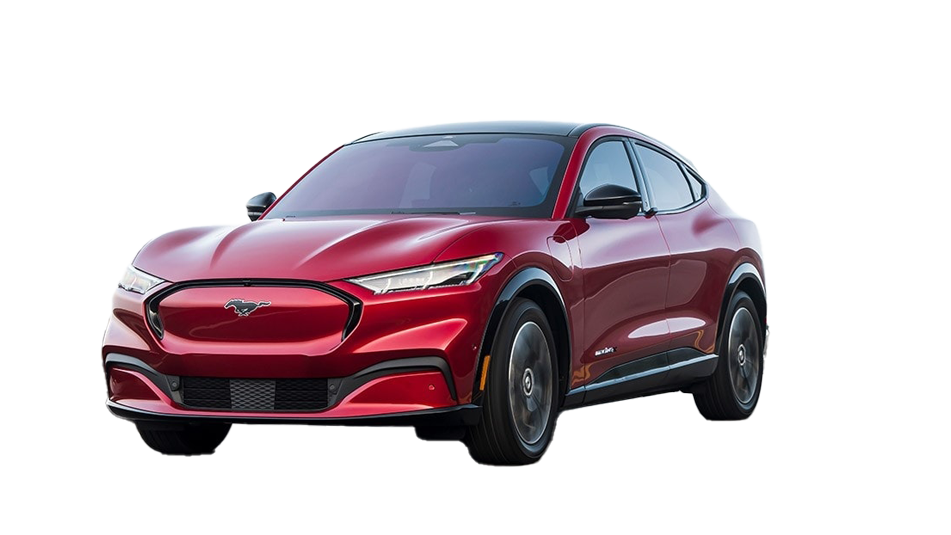Insuring your fleet of vehicles is a no-brainer for all fleet managers. But when it comes to fully understanding fleet insurance and choosing the best fleet insurance policy, it’s easy to get lost when considering all the insurance companies and policy options.
To help, this comprehensive guide will explore the nuances of commercial fleet insurance, its pivotal role for businesses, and how it acts as a safety net, ensuring assets remain protected and businesses thrive
What is Fleet Insurance?
Fleet insurance is a specialized commercial auto insurance policy tailored for businesses. Unlike individual car insurance, fleet insurance consolidates coverage for two or more business vehicles under a single policy. Insuring an entire fleet under one fleet policy streamlines administrative tasks and offers potential fleet insurance cost savings and flexibility.
For business owners, fleet insurance isn’t just about protecting vehicles; it’s a strategic move of risk management to shield businesses from unforeseen liabilities, ensuring smooth operations and peace of mind.
Eligibility:
Who Can Apply? Commercial auto insurance isn’t a one-size-fits-all solution. Typically, businesses with a minimum of two to five vehicles used for commercial purposes can get insurance coverage. However, the exact number might vary based on the insurance provider and specific auto insurance policy terms.
Usage Matters:
It’s not just about the number of commercial vehicles. The nature of their use—whether for deliveries, transportation, or other commercial activities—also plays a pivotal role in determining eligibility.
Types of Insurance:
Understanding insurance coverage types is crucial to ensure that a business’s unique needs are met. Whether you are a small business owner or run a major fleet out of California, it is critical to understand all aspects of general liability coverage. Here’s a closer look:
- Liability Coverage: This is the bedrock of any fleet insurance policy. It covers physical damages and bodily injuries to third parties in the event of an accident where the fleet vehicle is at fault.
- Collision Coverage: Accidents happen. Collision coverage ensures that damages to the fleet vehicle itself, resulting from a collision, are covered.
- Comprehensive Coverage: Beyond collisions, vehicles can be damaged by events like theft, vandalism, or natural disasters. Comprehensive coverage steps in to cover these non-collision-related property damages.
- Additional Coverage: Depending on the business’s needs, there are other coverages to consider, such as uninsured motorist coverage, medical payments, and more. It’s essential to consult with an insurance provider to tailor the policy to the business’s unique requirements.
Benefits of Fleet Insurance for Businesses
Opting for fleet insurance is a strategic move that benefits businesses beyond providing fleet protection. Let’s explore some of these advantages that make fleet insurance an invaluable asset for businesses, no matter the number of vehicles they operate.
Efficiency:
- Streamlined Operations: Juggling multiple insurance policies for individual, personal vehicles can be a logistical nightmare. Fleet insurance simplifies this by consolidating coverage for all vehicles under a single umbrella policy. This not only reduces paperwork but also ensures consistent coverage terms across the fleet.
- One Renewal Date: Forget tracking multiple renewal dates. With fleet insurance, there’s just one renewal date to remember, making the process more manageable and less time-consuming.
Cost Savings:
- Economical Choice: When compared to individual vehicle policies, fleet insurance often comes out as the more economical choice. By bundling multiple vehicles, businesses can secure better rates and significantly save in the long run.
- Discount Opportunities: Insurance companies frequently offer discounts for businesses that maintain a safe driving record or implement safety measures. This further amplifies the cost-saving potential of fleet insurance.
Flexibility:
- Diverse Coverage: Whether it’s a compact car, a delivery van, or a heavy-duty truck, fleet insurance is adaptable. It can cover a diverse range of vehicle types, ensuring that all assets are adequately protected with physical damage coverage.
- Multiple Drivers: Businesses evolve, and so do their needs. Fleet insurance offers the flexibility to cover multiple drivers, allowing businesses to adapt to changing operational demands seamlessly.
In essence, commercial vehicle insurance isn’t just about protection—it’s about empowering businesses. It offers a harmonious blend of efficiency, cost-effectiveness, and adaptability to ensure businesses are well-equipped to navigate the challenges of fleet management.
Tips for Maintaining a Safe and Insured Fleet
In the world of fleet management, safety isn’t just a priority—it’s a necessity. Ensuring a safe and insured fleet not only safeguards assets but also fosters trust among clients and stakeholders. Here are some strategies to ensure your fleet remains in top-notch condition:
Take Proper Safety Measures:
- Schedule Regular Maintenance: To keep them working like a well-oiled machine, company vehicles need regular check-ups. Ensure timely maintenance checks, including oil changes, brake inspections, and tire rotations. This not only prolongs the vehicle’s lifespan but also ensures it operates safely on the road.
- Properly Train Drivers: A vehicle is only as safe as the person behind the wheel. Investing in comprehensive driver training programs can significantly reduce the risk of accidents. These programs should cover defensive driving techniques, emergency response, and the nuances of driving different vehicle types.
- Keep Emergency Kits in Each Vehicle: Equip each vehicle with an emergency kit containing essentials like first-aid supplies, a flashlight, and basic tools. This ensures drivers are prepared for unforeseen situations.
Thoughtfully Select Your Drivers:
- Conduct Background Checks: The foundation of a safe fleet lies in its drivers. Before hiring, conduct thorough background checks to ensure potential drivers have clean driving records. Prioritize those with a history of safe driving, as this can significantly reduce risks and potential liabilities.
- Continuously Monitor: Once onboarded, monitor drivers’ performance regularly. Use feedback mechanisms, such as client reviews or telematics data, to identify areas of improvement. Remember, a safe driver not only reduces accident risks but can also positively impact deductibles and insurance premiums.
Integrate Technology into Your Entire Fleet:
- Use GPS Tracking: In today’s digital age, technology is a fleet manager’s best friend. Integrate GPS tracking systems to monitor vehicles in real time. This not only aids in route optimization but also ensures drivers adhere to safe driving practices.
- Install Dash Cams: Consider installing dash cams in fleet vehicles. These devices record real-time footage, providing valuable insights in case of disputes or accidents. Moreover, many insurance providers offer discounts for fleets equipped with dash cams, recognizing their role in promoting safety.
Maintaining a safe and insured fleet requires taking proactive measures, such as stringently selecting safe drivers and strategically integrating technology. By prioritizing safety, businesses not only protect their assets but also position themselves as industry leaders committed to excellence.
Making the Right Choice: Selecting Your Fleet Insurance Provider
When selecting the right fleet insurance provider, you are also choosing a trusted partner for your business. It’s a decision that requires careful consideration, research, and due diligence.
Step 1: Compare Different Auto Insurance Coverage Options
Different providers offer varying coverage options, premium rates, and terms. By comparing these quotes, businesses can identify the most cost-effective solution that aligns with their specific needs.
Step 2: Factor in the Insurance Company’s Reputation
Look for providers with positive customer reviews, testimonials, and strong financial ratings. These indicators often reflect the provider’s commitment to customer service, claim settlement efficiency, and overall reliability. Partnering with a reputable provider ensures that, in the event that you need to file insurance claims and show medical bills, the process is smooth, transparent, and hassle-free.
Step 3: Shop Around for Discounts
Many insurance providers offer a range of discount opportunities that can significantly reduce premium costs. For instance, bundling multiple insurance policies, such as fleet insurance with property or liability insurance, can lead to substantial savings. Additionally, providers might offer discounts for fleets equipped with safety features, such as GPS tracking or dashcams. It’s always a good idea to inquire about these opportunities during the quote comparison process.
Step 4: Choose the right partner
Once you’ve done your due diligence, it’s time to select your insurance provider. As you make your final decision, remember the cheapest option isn’t always the best. It’s about finding a balance between cost and comprehensive coverage.
To help fleet managers better understand the ins and outs of fleet insurance, Spring Free EV created a free Fleet Insurance Guide.
Related: How Many Vehicles for Fleet Insurance?
The Spring Free EV Advantage in Fleet Management
While Spring Free EV does not currently offer fleet insurance, they offer a number of other business solutions tailored to modern business needs. With the right insurance policy in place, fleet managers can then further streamline their operations by easily leasing electric vehicles with Spring Free EV.
Save More Money with Spring Free EV:
Whether it’s the reduced maintenance costs associated with electric vehicles or the competitive leasing options, Spring Free EV ensures that businesses can maximize their ROI while minimizing operational expenses.
Bolster Your Reputation with Spring Free EV:
In an era where environmental consciousness is paramount, Spring Free EV’s offerings resonate with businesses aiming to reduce their carbon footprint. The eco-friendly nature of electric vehicles means that businesses can not only operate more sustainably but also position themselves as green leaders in their respective industries. By choosing Spring Free EV, businesses are making a statement—a commitment to a greener planet and a sustainable future.
Choose Flexible Lease Options Tailored for High-Mileage Usage:
Spring Free EV’s fleet is designed to withstand the demands of rigorous usage, ensuring that businesses can operate seamlessly without frequent downtimes or maintenance breaks. This reliability ensures that businesses can serve their clients efficiently, fostering trust and long-term partnerships.
As businesses evolve, so do their fleet needs. Whether it’s expanding operations or venturing into new markets, Spring Free EV ensures that businesses can scale their fleets effortlessly. With a range of vehicle options and customizable leasing plans, Spring Free EV caters to the diverse and ever-changing needs of modern businesses.
Conclusion
Fleet insurance underpins the safety and financial stability of companies with commercial vehicles, as it safeguards against potential accidents, mitigates financial risks, and ensures seamless operations.
Even more, by consolidating multiple vehicles under a single policy, businesses can reap the benefits of streamlined administration, potential discounts, and tailored coverage options. It’s an investment that pays dividends in the form of peace of mind, financial stability, and operational efficiency.
As we conclude this comprehensive guide, it’s essential to remember that fleet insurance isn’t a one-size-fits-all solution. Every business has unique needs, operational dynamics, and risk profiles. Therefore, it’s imperative to consult with insurance providers to craft a fleet insurance solution that aligns perfectly with your business’s specific requirements.
Check out Spring Free EV’s free Fleet Insurance Guide and contact them to see how you can better protect your fleet today.

